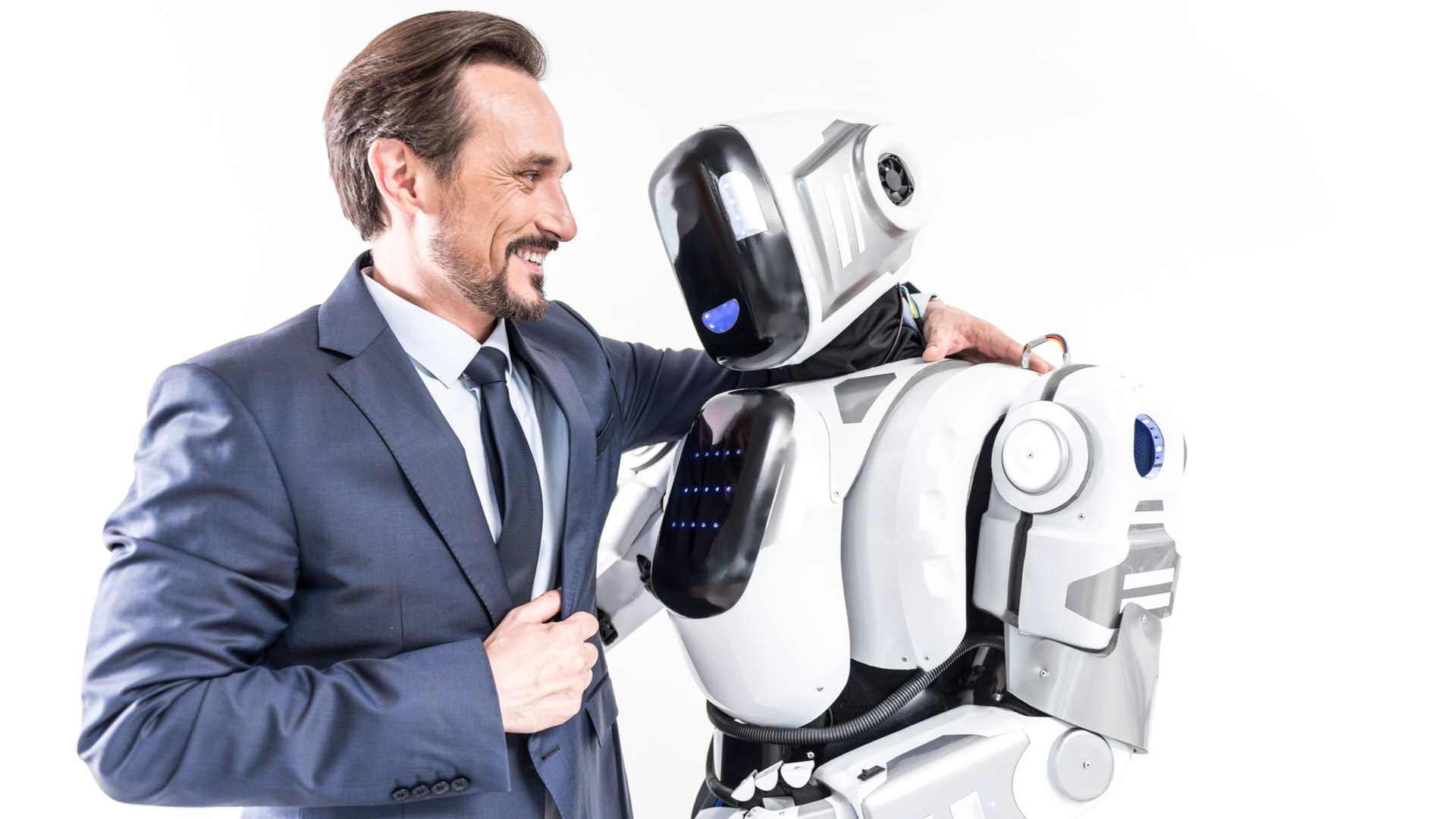Comments
- No comments found

It is time to incorporate both humans and machines into decision-making processes.
GPT Summary: The traditional “man versus machine” narrative is outdated and must be replaced with a more cooperative paradigm, in line with John Nash’s cooperative game theory, which emphasizes collaboration and mutual benefit. As technology advances, it is crucial to embrace AI as a thought leader and partner in our society. By integrating AI into our collective decision-making process, we can tackle complex problems, enhance human productivity, and contribute to our shared intelligence. AI can offer valuable insights, challenge our assumptions, and refine our understanding, fostering a synergistic relationship that allows both human and machine intelligence to complement each other. Inviting AI to the table is an imperative for harnessing the power of collaboration to address the 21st century’s challenges.
The notion of “man versus machine” has long captivated our imaginations, often painting a picture of a dystopian future where humanity struggles against the iron grip of advanced technology. However, this concept is quickly becoming an outdated perspective, as we now realize that artificial intelligence can be a thought leader and essential collaborator in our society. This shift in perspective aligns with the principles of cooperative game theory, as proposed by John Nash, where the focus is on collaboration and mutual benefit rather than conflict. It’s time we welcome AI, and GPT to have a seat at the table and recognize the importance of their presence in our collective decision-making process.
The traditional “man versus machine” narrative is rooted in zero-sum game theory, where one party’s gain is the other party’s loss. However, this narrow perspective overlooks the potential for collaboration and mutual benefit. John Nash, a renowned mathematician, introduced the concept of cooperative game theory, challenging the idea of the zero-sum game. Nash’s equilibrium encourages participants to seek cooperative strategies, leading to outcomes that are optimal for all parties involved.
As we move into an era of unprecedented technological advancements, it’s crucial to embrace AI as a thought leader and partner. By doing so, we can leverage the unique capabilities of AI to tackle complex problems, enhance human productivity, and contribute to our collective intelligence. The collaboration between man and machine is no longer a choice, but a necessity for progress.
In a world where data is abundant, and the complexities of global challenges are ever-increasing, AI can provide valuable insights and perspectives that human cognition alone may not be able to achieve. AI can process vast amounts of information, identify patterns, and make predictions in ways that are far beyond human capabilities. By having AI at the table, we can complement human expertise with machine intelligence to arrive at more informed and balanced decisions.
AI and GPT models can serve as introspective, cognitive partners by leveraging their unique iterative dynamics. These intelligent systems can rapidly process vast amounts of information, generate multiple perspectives, and provide nuanced insights through continuous self-improvement. As humans interact and collaborate with AI, we benefit from its ability to think beyond our cognitive constraints, challenge our assumptions, and refine our understanding of complex problems. This symbiotic relationship allows us to expand our mental horizons and make more informed decisions, fostering a deeper level of introspection and cognitive growth.
In the context of cooperative game theory, it is more appropriate to consider AI and computers as contributing components rather than winning components. The focus of cooperative game theory is to emphasize collaboration and mutual benefit among all participants, rather than identifying a single winner. By integrating AI and computers into the decision-making process, we create a synergistic relationship that allows both human and machine intelligence to complement each other. In this scenario, the “winning” aspect is the successful collaboration and the achievement of mutually beneficial outcomes for all parties involved, rather than the dominance of one component over the other.
The outdated “man versus machine” narrative must be replaced with a new, more cooperative paradigm. By embracing the wisdom of John Nash’s cooperative game theory, we can unlock the potential of AI as a thought leader and partner in our collective decision-making process. Inviting AI to have a seat at the table is not only an opportunity, but an imperative for harnessing the power of collaboration between man and machine to address the complex challenges of the 21st century.
John is the #1 global influencer in digital health and generally regarded as one of the top global strategic and creative thinkers in this important and expanding area. He is also one the most popular speakers around the globe presenting his vibrant and insightful perspective on the future of health innovation. His focus is on guiding companies, NGOs, and governments through the dynamics of exponential change in the health / tech marketplaces. He is also a member of the Google Health Advisory Board, pens HEALTH CRITICAL for Forbes--a top global blog on health & technology and THE DIGITAL SELF for Psychology Today—a leading blog focused on the digital transformation of humanity. He is also on the faculty of Exponential Medicine. John has an established reputation as a vocal advocate for strategic thinking and creativity. He has built his career on the “science of advertising,” a process where strategy and creativity work together for superior marketing. He has also been recognized for his ability to translate difficult medical and scientific concepts into material that can be more easily communicated to consumers, clinicians and scientists. Additionally, John has distinguished himself as a scientific thinker. Earlier in his career, John was a research associate at Harvard Medical School and has co-authored several papers with global thought-leaders in the field of cardiovascular physiology with a focus on acute myocardial infarction, ventricular arrhythmias and sudden cardiac death.
Leave your comments
Post comment as a guest